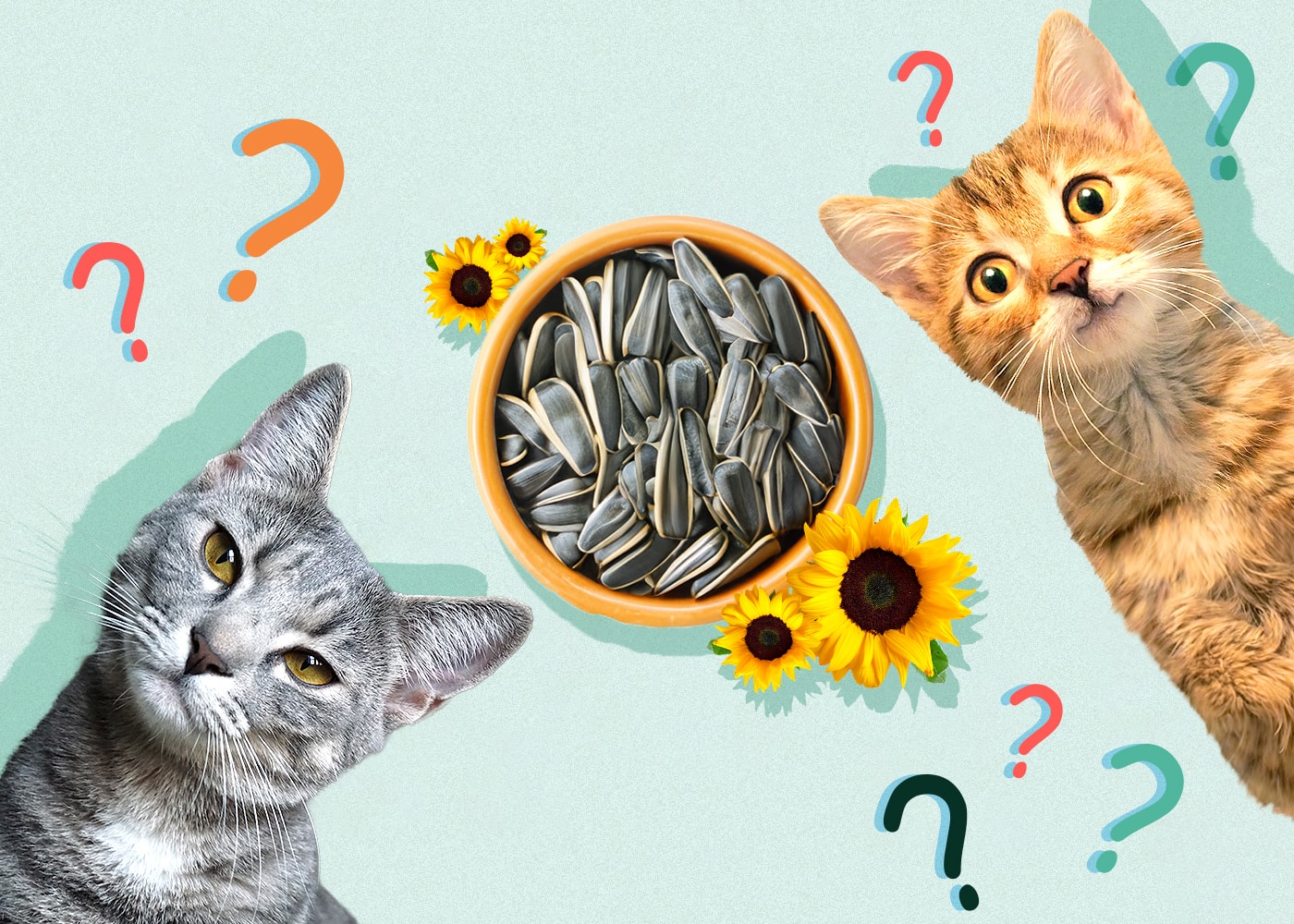Can Cats Eat Dragon Fruit? Vet-Reviewed Facts & Safety Guide

Updated on
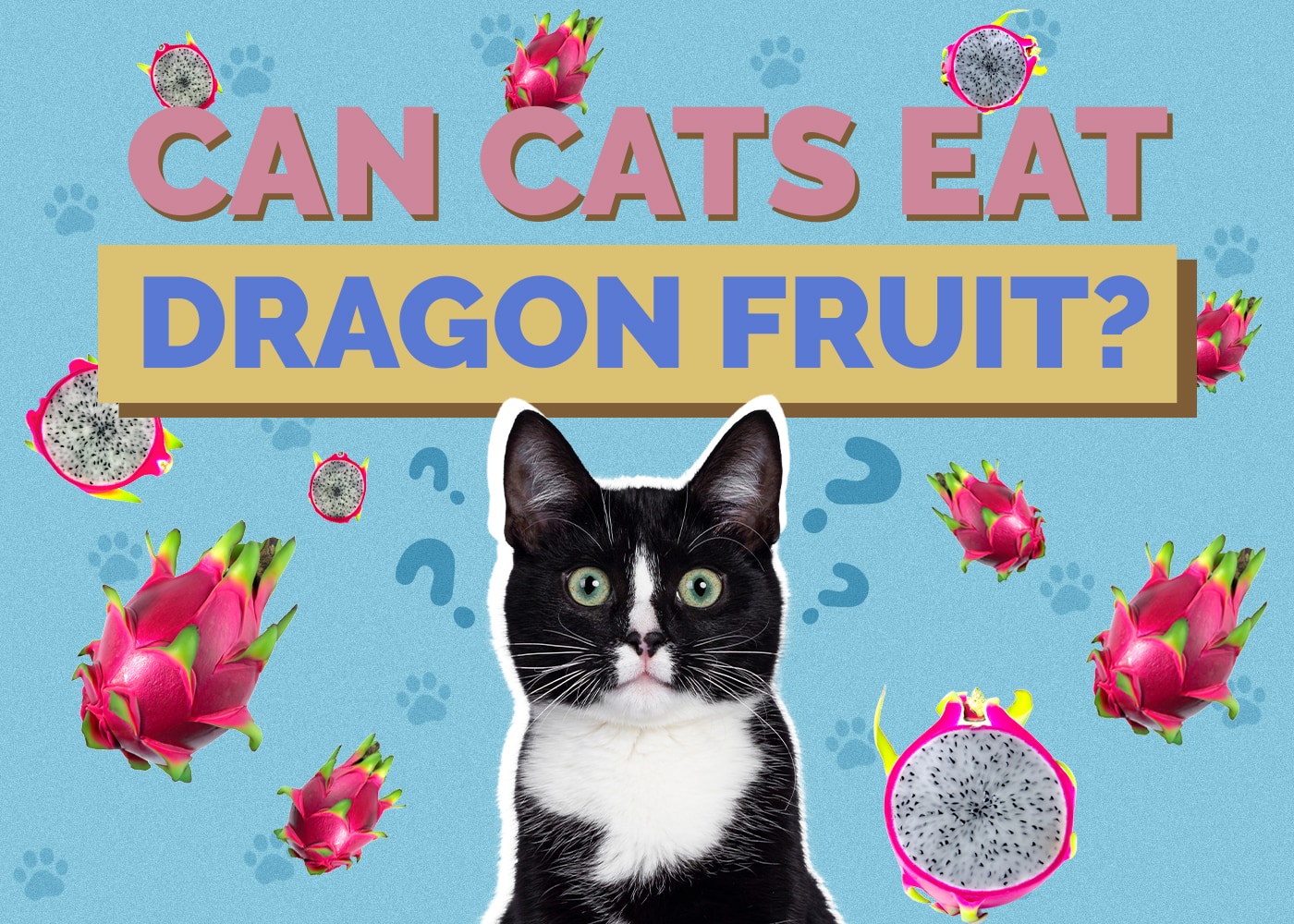
You never know what your curious kitty will get into next, which is why it is so important for cat owners to be aware of potential dangers within the home. After all, foods and other household items that are perfectly safe for us can have severe effects on our cat’s health.
We are here to talk about dragon fruit. The delicious tropical fruit has been growing in popularity in recent years. Not only are we eating it raw or freeze-dried, but many drinks include dragon fruit. So, what exactly is dragon fruit, and can a cat eat it? Dragon fruit is not toxic to cats, but it shouldn’t be offered to them often. Let’s find out the reasoning behind cats and their limited fruit intake.
What Is Dragon Fruit?
Dragon fruit is a unique, exotic-looking tropical delicacy native to southern Mexico and Central America. The fruit grows on the Hylocereus cactus, commonly referred to as the Honolulu queen. The most unique part about the cactus is that its flowers only open during the night.
The dragon fruit also goes by pitaya, pitahaya, and strawberry pear. It gets its name from the green scales and bright red skin that resembles a dragon. Dragon fruit is now grown worldwide, and the most common variety is the type with white pulp and black seeds.
There is also a type with red pulp and black seeds and another with yellow skin, white pulp, and black seeds, but it is rarer. Dragon fruits are only slightly sweet and do not have an intense taste.
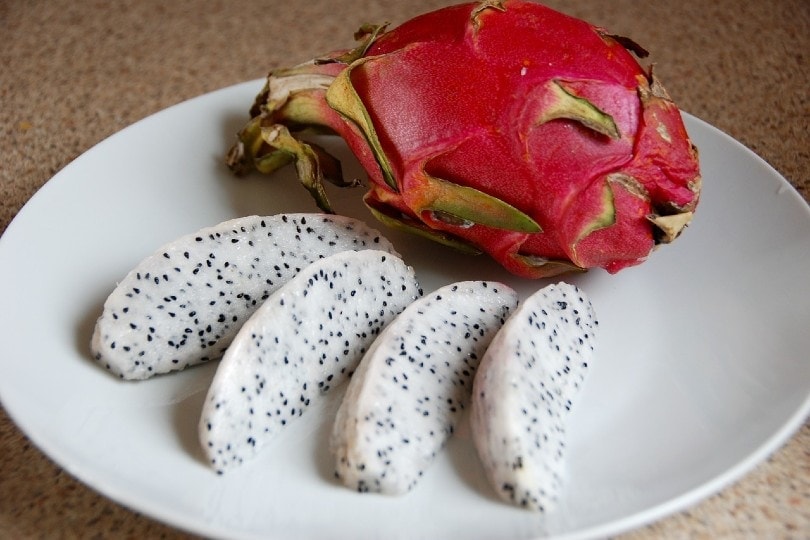
Cats and Dragon Fruit
Cats can eat dragon fruit, but that does not mean it should be added as a staple to their diet. Dragon fruit is not toxic to cats, and if they were to munch on dragon fruit sitting out on the counter, it wouldn’t cause any harm.
For us, dragon fruit may be nutrient-rich and packed with health benefits, but as obligate carnivores, cats cannot properly digest plant material and benefit from it as humans can. Cats get all their needed nutrients directly from meat, so there is no real reason to supplement their diet with dragon fruit.
Can Cats Eat Other Fruits?
The answer to this question is not so simple. Some fruits and other human foods are perfectly safe if consumed by cats, while others are not.
Let’s take a quick look at some of the safe and not-so-safe fruits you have sitting around the house:
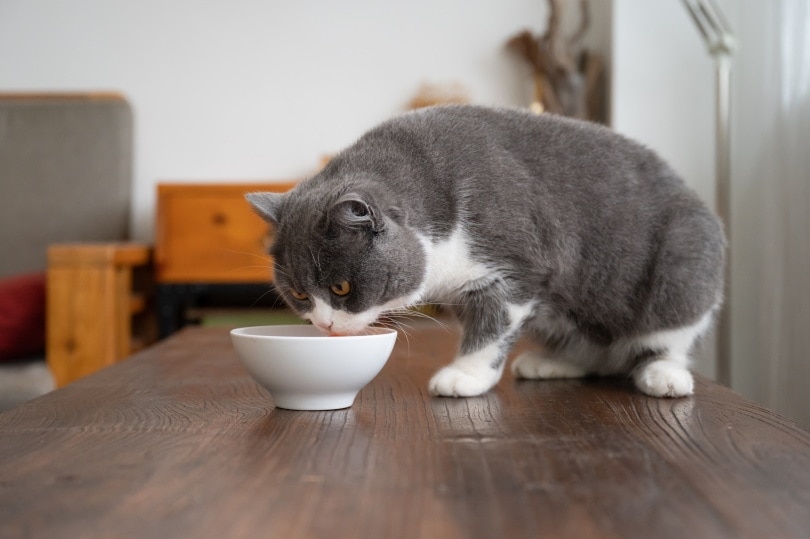
Fruits Safe if Consumed by Cats
Regarding non-toxic fruits, your cat could suffer from digestive upset, including diarrhea, vomiting, and nausea, if they consume large amounts. Their digestive systems are not designed for anything other than meat. The following are considered safe if consumed in tiny amounts:
- Apples (not seeds or stem)
- Apricots (no pit, seeds, or stem)
- Bananas
- Blackberries
- Blueberries
- Cantaloupe
- Cucumber
- Cranberries
- Honeydew
- Mango
- Nectarines
- Pear (no pit, seeds, or stem)
- Pineapple
- Raspberries
- Strawberries
- Watermelon (not seeds)
Fruits That Are Unsafe for Cats
It is equally important to be aware of the unsafe fruits for cats to prevent any toxic effects. If your cat were to consume any of the following, you need to contact your veterinarian immediately for further guidance. It is also vital to know the signs of toxicity so that you can be on the lookout.
- Grapes
- Lemon
- Lime
- Orange
- Raisins
- Most seeds, stems, pits, rinds, and roots
Keeping Your Cat on a Balanced Diet
The best way to ensure you are feeding your cat a proper, balanced diet is by speaking to your veterinarian and developing a meal plan. Most commercially available complete and balanced cat foods on the market are designed to meet all the nutritional requirements your cat needs. The importance of feeding your cat high-quality cat food is immeasurable.
To ensure overall health and well-being, you want to feed food of top quality that is also appropriate to your cat’s age, size, and activity level. Not all cat brands have the same quality standards, so it is important to learn how to read the food label.
Additionally, not all commercially available cat foods are complete and balanced to offer your cat all the nutrition they need to thrive. Some are only intended as toppers or dietary additions.
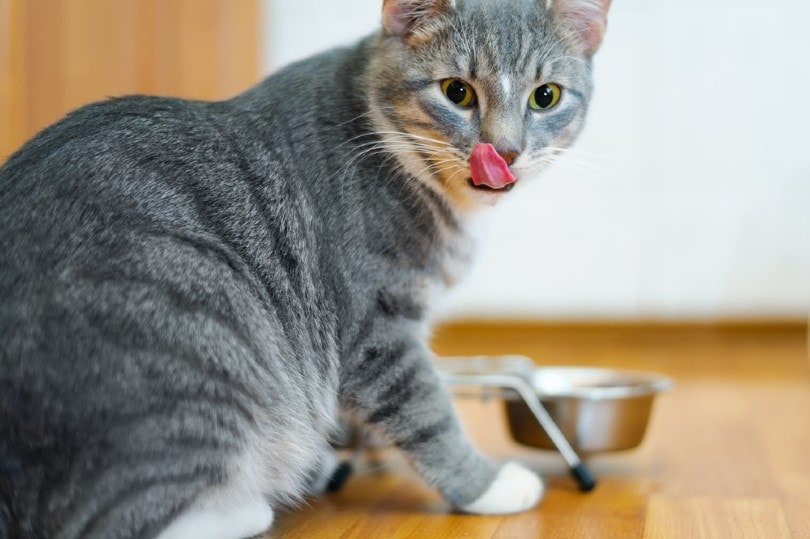
Types of Cat Food
There are quite a few types of cat food. Each type can be fed in addition to another, but you need to ensure you are feeding the correct quantity and avoid overfeeding.
- Fresh cat food, gently cooked
- Dry kibble
- Wet cat food
- Frozen or refrigerated raw food
- Freeze-dried raw cat food
- Semi-moist cat food
Healthy Snacks You Can Offer Your Cat
We’ve included a list of healthy snacks you can feed to your cat in addition to their regular diet. It is essential to do so in moderation to avoid obesity.
- Cooked, unsalted lean meats (small amounts)
- Dried liver (small amounts)
- Pieces of kibble
- Bits of wet food
- High-quality commercial treats
Now that you know what you can safely feed your cat, it’s just as important to find a bowl that supports their health and well-being. With whisker-friendly bowls and a wide tray to catch any spills, our Hepper NomNom Cat Bowl is our favorite option.
Conclusion
Cats can eat small portions of dragon fruit occasionally since the delicious, increasingly popular cactus fruit is non-toxic to cats. Since cats are obligate carnivores that get all their needed nutrients from meat and their commercially available complete and balanced cat foods, there is no real reason to supplement their diet with dragon fruit.
Before adding anything to your cat’s diet or changing it, always speak to your veterinarian. It is also crucial to contact them if your cat were to eat any food or get into any household item that could potentially cause them harm. If your cat consumes a small amount of dragon fruit, you’re in the clear.
Related Reads:
Featured Image Credit: brendawood33, Pixabay





